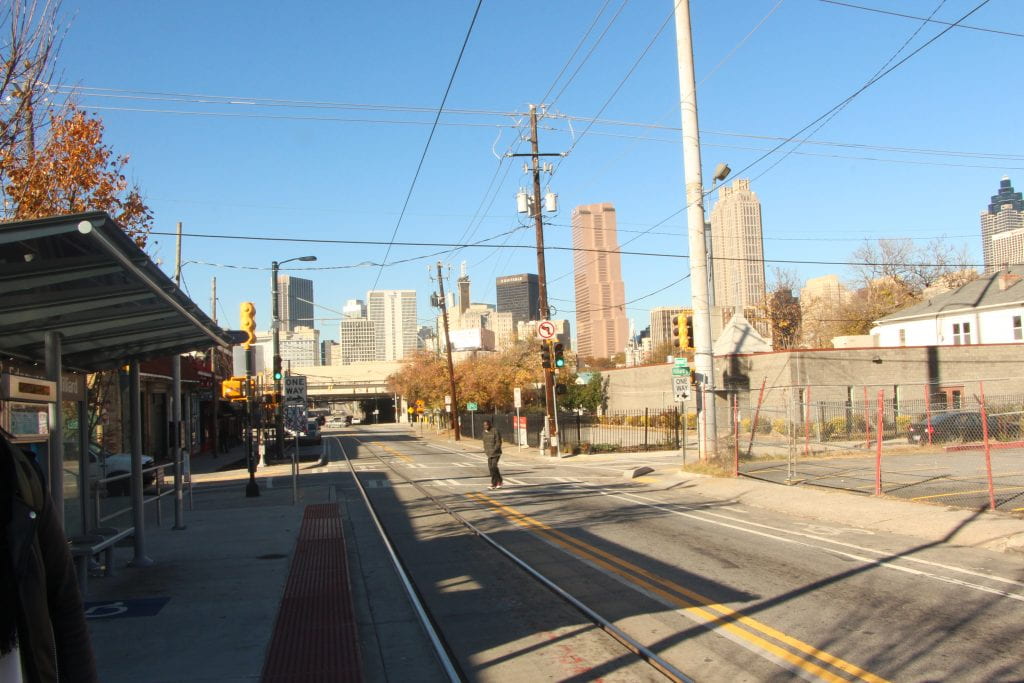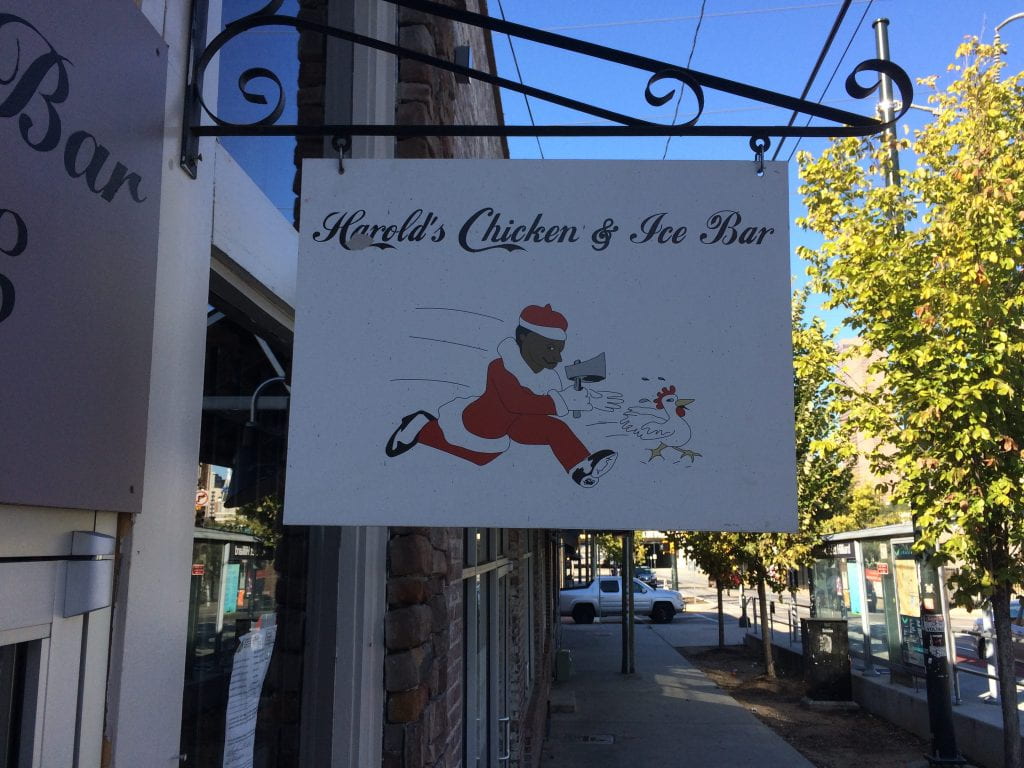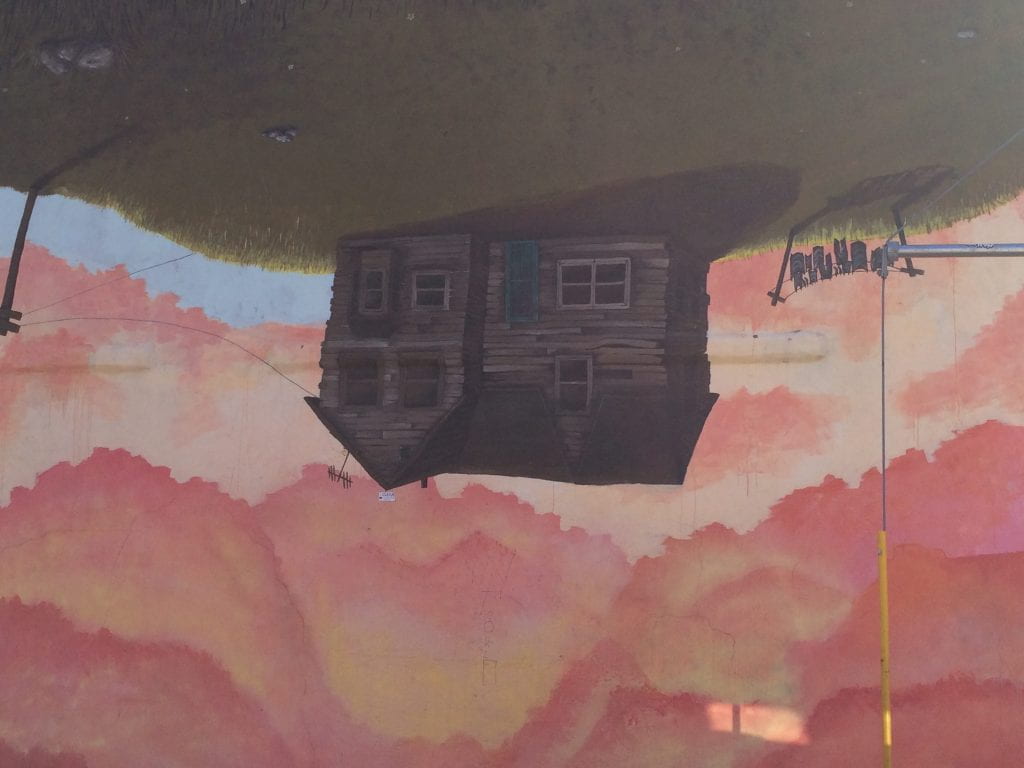On December 2, 2016 a group of instructional designers and graduate students hopped on the Atlanta Streetcar at Hurt Park for the first ever guerilla Art in the Wild: StreetArt Tour in the Edgewood district. The goal of this CETL-hosted trip was to encourage educators and designers to consider how intentionally designed and chaotic elements simultaneously clash and flow to create engaging spaces of localized public pedagogy. In turn, we hoped to bring our insights back to inform our own diverse philosophies and practices.
Where We Went & What We Saw
After disembarking at the Edgewood Station we made our way east along Edgewood, encountering a wide variety of commissioned and unsanctioned art. This art included Living Walls murals, stickers, wheat paste, small pictorial and text graffiti pieces, signage, and elaborately decorated storefronts. But we also encountered government and privately owned objects, random detritus, moving and resting animals, perambulating humans, motley styles of architecture, always-changing city scapes, snippets of music, a bouquet of smells (both odoriferous and otherwise), construction and car noises, and variations of temperature, wind, sunlight. As with course design and delivery, we worked with the notion that it is impossible (and, arguably, undesirable) to disentangle individual elements from their context. Thus, we considered the “art” in the space in conjunction with the environment. After visiting Edgewood, we visited the gorgeously designed Madame C.J. Walker/WERD Living Museum to consider how an intentionally designed indoor space flows away from and into the street life surrounding it. I highly recommend that you visit this aesthetic and educational gem tucked away on Hilliard Street. Finally, we made our way West along Auburn Avenue and noted how the historic monuments and placards authored the environment and juxtaposed it with Edgewood’s more chaotic approach.
If You’d Like To Visit
Rather than give you my lessons learned I encourage your to set out on your own street art adventure. Here are a list of tips and questions to guide your musings if you’d like to visit Edgewood yourself – or if you’d like to explore street art in other parts of the world:
Think about the importance of perspective: Walk up and down both sides of the street. Remember to turn around. Look around you. Look up. Look down. How does changing your physical perspective change your impressions of the pieces or the space?
Think about how elements clash and flow: How do elements within individual pieces work together and clash? How do individual pieces work together? How does the entire composition of the streetscape “work”? Conversely, where do you experience areas of dissonance and clash? How does the entire composition produce chaos?
Think about official and unofficial art: What is “art” in this space? What about design? Is there a difference? Can you identify commissioned art versus guerilla art? How can non-intentionally designed elements – like plants, humans, animals, trash, etc – be considered art? What about buildings, business signs, street signs, etc? What about non-visual elements – think about touch, scent, sound (but maybe don’t taste anything).
Think about the artists: Who do you think created this official and unofficial art (if anyone)? Who is considered an artist? A designer? A laborer? What do you think the intention of the creator(s) were for each piece? What about for the entire streetscape? Does intention matter?
Think about the audience: Who do you think that these pieces were intended for? How do you think that the positionality (demographics, life experience, etc) of the viewer affects the experience? Does audience interpretation matter?







You must be logged in to post a comment.